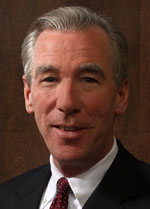Recently, Belgium’s Senate voted overwhelmingly to extend legal euthanasia to children of any age. The proposal, which will likely become law, limits the practice to children who are terminally ill, suffering great pain and have their parents’ permission.
In theory, they must also understand what they are asking for (if that is even possible for, say, a 10-year-old).
This horrifies most Americans. Perhaps The New York Times exaggerates when it makes a subtle comparison to “the horrors of Nazi Germany, which killed thousands of mentally and physically handicapped children,” but that does not mean the Belgian proposal is wise or well-thought-out.
Philippe Mahoux, sponsor of the Belgian bill, argues that ever since Belgium legalized adult euthanasia, doctors have been killing terminally ill children anyway and covering it up. He hopes to spare those doctors from prosecution.
Once death is pursued as an acceptable medical outcome, medicine is changed. Mahoux’s argument implies as much. And if doctors can cause the death of suffering adult patients, then what argument is there to deprive children of the same option? Dr. Jan Bernheim of the Free University of Brussels makes precisely this argument in favor of Mahoux’s bill.
Across the border, the Royal Dutch Medical Association has taken the argument a step further still. Although euthanasia is illegal in the Netherlands for children under 12, the association holds that “severe suffering [by] the parents” over a newborn’s abnormalities is sufficient to justify euthanasia. This is the scariest position of all, depriving medicine of any reference whatsoever to the patient’s well-being.
It is not hard to deduce from this mindset the danger it creates for patients who are incapacitated or who feel pressure (real or imagined) from family or society to choose death. Underlying the embrace of doctor-assisted suicide and euthanasia is a conviction that suffering is pointless.
My brother Kevin died from leukemia when he was 13. His form of the disease is survivable today, but in those days few survived more than 18 months. It was a hard trial for Kevin, who as a child was afraid of a lot of things, including scary movies, large birds, spiders and needles.
He needed bone marrow transplants and blood transfusions, both of which involved large, painful needles. The drug regimen caused his hair to fall out. When he couldn’t fight an infection and his temperature spiked, the doctors would put him in a tub full of ice water. He became thin and weak. He eventually bled to death.
But as Kevin grew weaker from the disease, he grew in wisdom and holiness. For our family it was a period full of grace. I was 10 years older, but I found myself making mental notes of how I could be more like him. He had long since overcome his fear of needles, the least of his problems.
By his last Christmas, he knew he was going to die, though he didn’t burden the rest of us with the knowledge. I remember praying the rosary with him and thinking what a privilege it was to pray with such a saintly young man.
Catholics maintain that suffering has meaning and can be redemptive. Kevin’s suffering changed his family, his doctors and the children around him in the hospital. After he died, my parents bought a house in Buffalo, N.Y., near the hospital, for the use of patients and families who needed a place to stay while being treated.
Since then, hundreds of other houses have cared for thousands of families. These things wouldn’t have happened if my parents had opted for the Belgian solution.
***
Garvey is president of The Catholic University of America in Washington.
PREVIOUS: When Christians anywhere suffer, so do we all
NEXT: In 2014, bringing hope to those struggling through despair




Wow. Very touching. Thanks for sharing.